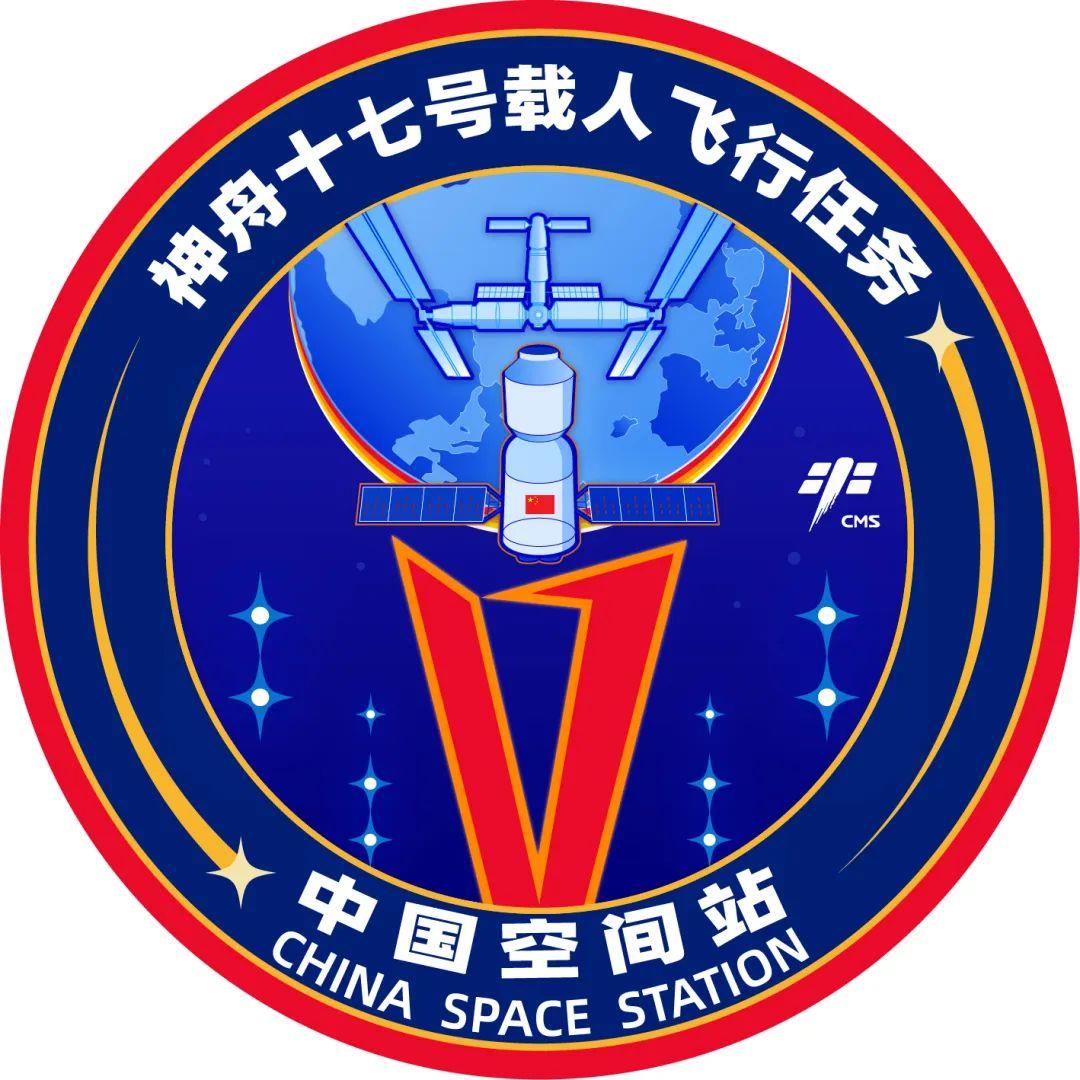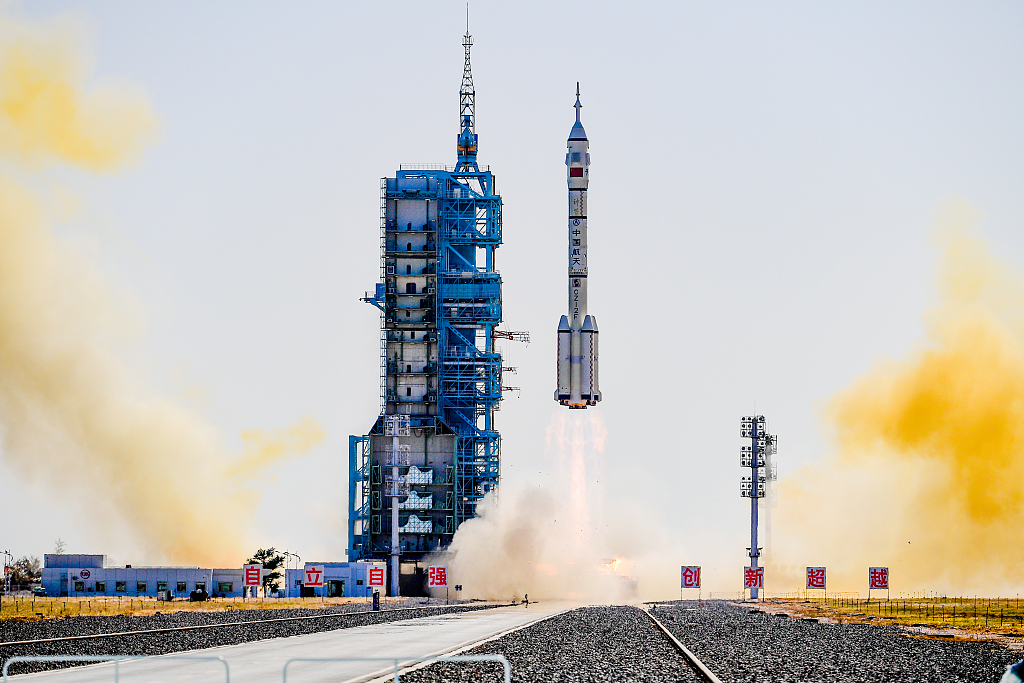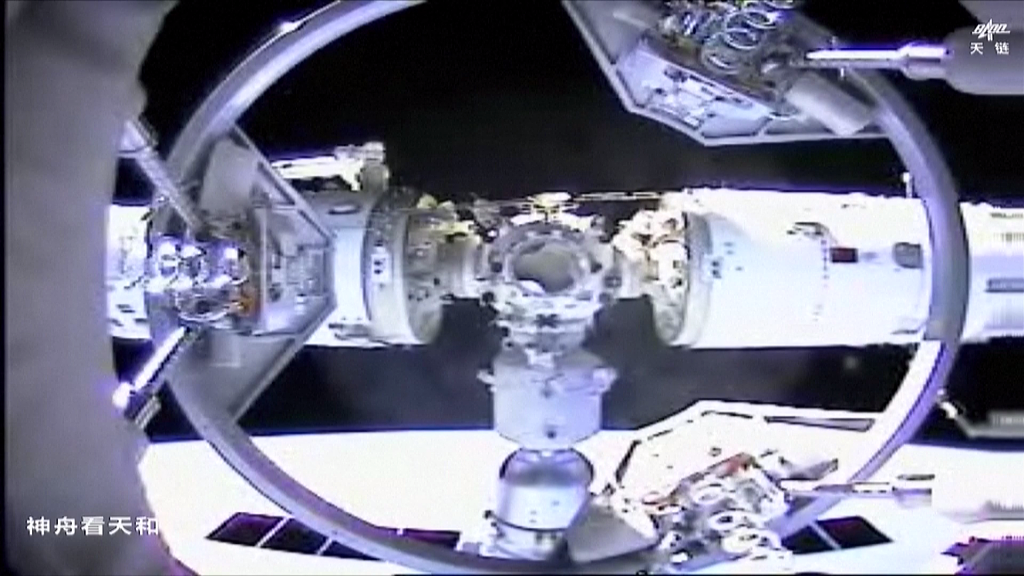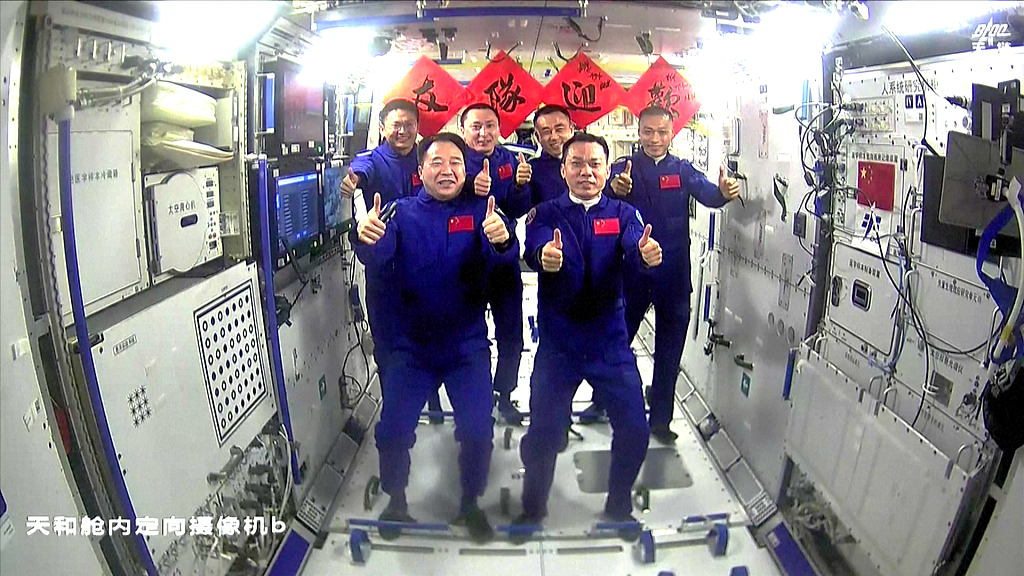03:53

The China Space Station has just welcomed the Shenzhou-17 manned spacecraft. Carrying three Chinese astronauts, it is the second manned spacecraft launched by China this year after the Shenzhou-16 manned spacecraft, which blasted off on May 30.
In this episode of Tech Breakdown, let's check out the highlights of China's Shenzhou-17 manned mission.
1. The logo
The logo of the Shenzhou-17 manned mission was released in March with the mission logos of the Shenzhou-16 manned mission and the Tianzhou-6 mission. It was the first open logo solicitation of China's manned space program.

The logo of the Shenzhou-17 manned space mission. /China Manned Space Agency
The logo of the Shenzhou-17 manned space mission. /China Manned Space Agency
The Shenzhou-17 logo is designed by Tan Haoyu, a postgraduate student at Sichuan Fine Arts Institute, featuring a balanced composition with the forward docking port of the spacecraft shown in the center. The tail flame of the spacecraft is combined with the number "17," producing a powerful visual impact symbolizing the vigorous development of China's manned space program.

The Long March-2F carrier rocket carrying the Shenzhou-17 spacecraft blasted off from the Jiuquan Satellite Launch Center in northwest China, October 26, 2023. /CFP
The Long March-2F carrier rocket carrying the Shenzhou-17 spacecraft blasted off from the Jiuquan Satellite Launch Center in northwest China, October 26, 2023. /CFP
The Shenzhou-17 manned spacecraft was sent into space onboard a Long March-2F carrier rocket. The rocket measures about 60 meters in length and over three meters in diameter. It is equipped with four boosters and has a takeoff weight of around 480 tonnes.
The rocket stands as a remarkable feat of technology. Compared with the rocket used for the previous mission, Chinese space engineers have made a total of 25 technical changes, mainly improving reliability and safety, and optimizing the whole working process at the launch site.
3. The spacecraft
The Shenzhou-17 manned spacecraft consists of three modules: the return, the orbital and the propelling module. It is the second of the new batch of the Shenzhou series, which started with the Shenzhou-16 manned spacecraft.
Compared with previous batches, the current batch has seen qualitative leaps in design and production, including using domestically made key components that make the spacecraft more independent and more controllable.
4. The China Space Station

The Shenzhou-17 manned spacecraft docks with the China Space Station, October 26, 2023. /China Manned Space Agency
The Shenzhou-17 manned spacecraft docks with the China Space Station, October 26, 2023. /China Manned Space Agency
The China Space Station also welcomed new changes. With the arrival of the Shenzhou-17 manned spacecraft, the space station has now expanded to a combination of three modules and three spaceships.
The three modules are the core module, Tianhe, and two lab modules, Wentian and Mengtian. And the three spaceships are the Shenzhou-16 and Shenzhou-17 manned spacecrafts and the Tianzhou-6 cargo spacecraft.
The country is planning to expand its space station into six modules from the existing three in the coming years.

A group photo of the Shenzhou-16 and the Shenzhou-17 crew members, with a banner saying "welcome teammates" at the back, October 26, 2023. /China Manned Space Agency
A group photo of the Shenzhou-16 and the Shenzhou-17 crew members, with a banner saying "welcome teammates" at the back, October 26, 2023. /China Manned Space Agency
The Shenzhou-17 crew will rotate with the Shenzhou-16 astronauts, who are scheduled to return to Earth on October 31, and conduct a series of tasks in orbit.
The tasks of the Shenzhou-17 crew included extravehicular activities of astronauts, space science experiments and technological tasks, routine work of platform management and space lectures.
China will continue its steps in space exploration. Besides the plans for its space station, the country has also commenced its first manned lunar exploration project, aiming to achieve the first manned landing on the moon around 2030.
Let's look forward to more news from the space!
Videographer: Zhao Yuxiang
Video editor: Zhang Rongyi
Cover image: Li Yueyun